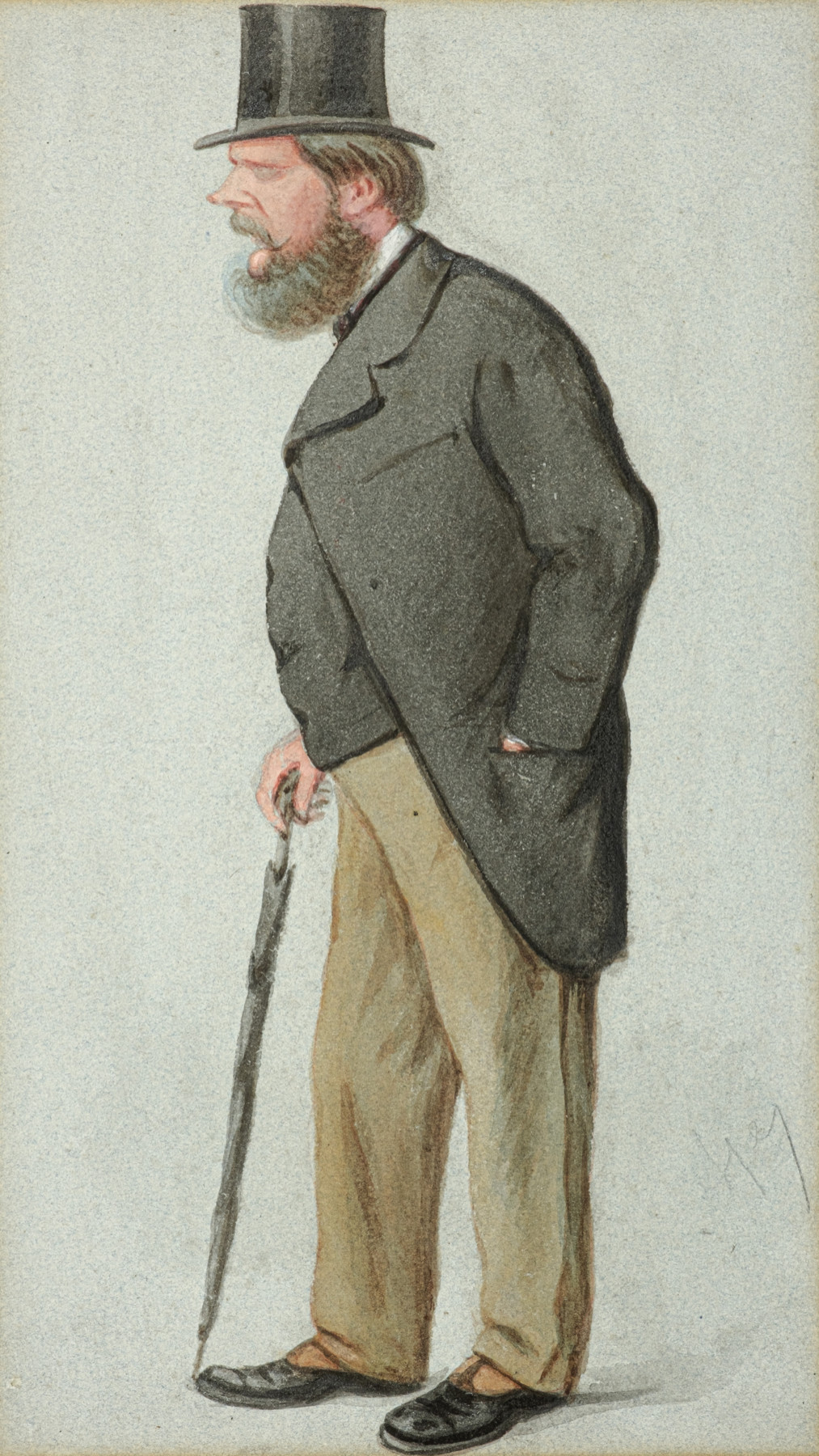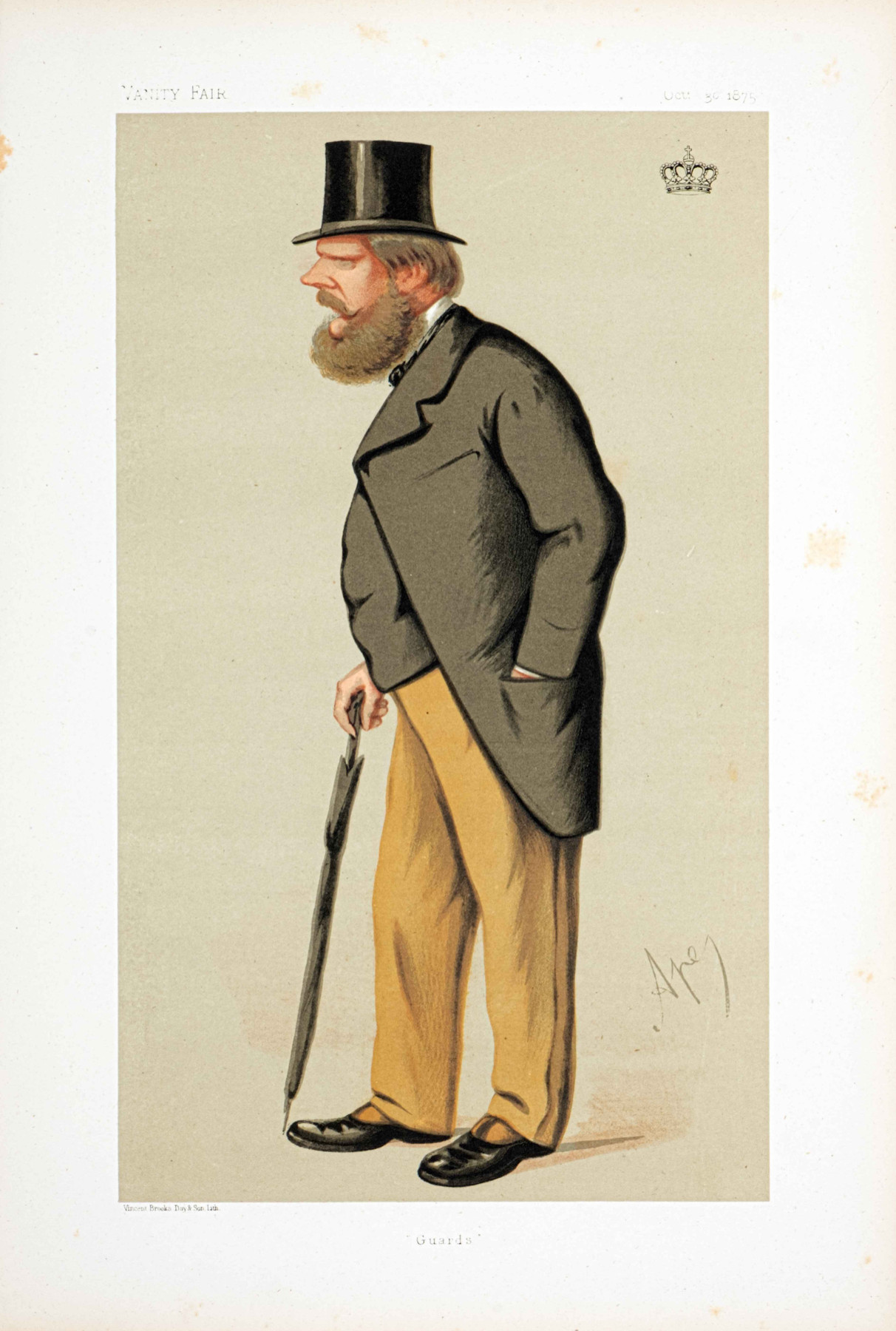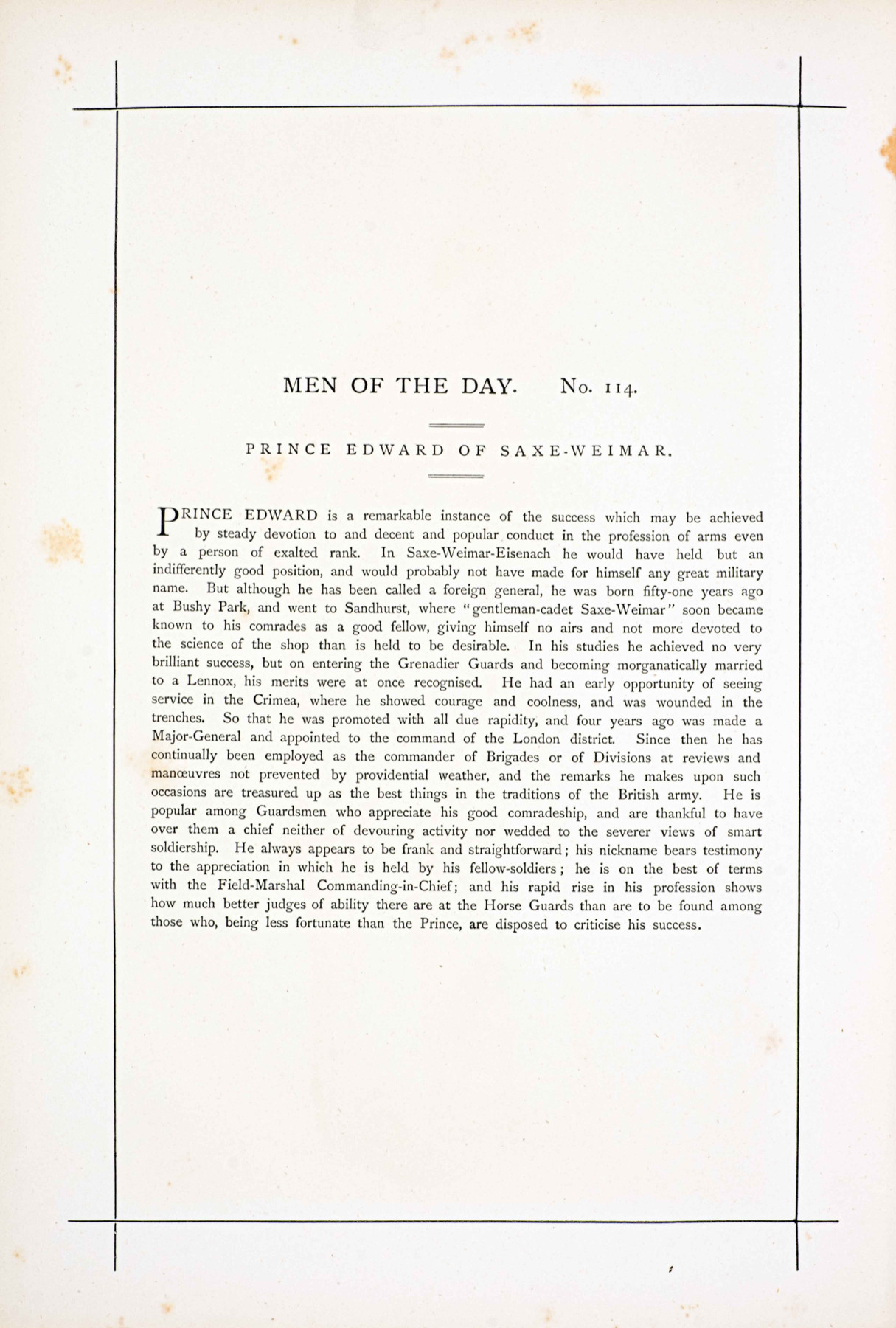


The son of Duke Bernard of Saxe-Weimar-Eisenach and Princess Ada, Prince Edward was born William Augustus Edward at Bushey Park, home of the Duke of Clarence (later William IV), and was chiefly brought up in England by the Duke’s wife, Queen Adelaide. As a child, he was a playfellow and friend of Queen Victoria and remained close to her throughout his life. Having been naturalised, Edward went to Sandhurst and entered the army in 1841. He served with distinction in the Crimea, seeing action at Alma, Bakalava and during the siege of Sevastopol. For his services he was awarded the CB, the Légion d’honneur and the Medjidie. He was appointed brevet colonel and aide-de-camp to Queen Victoria on 5 October 1855, and retained the position until 22 February 1869, when he was promoted major-general.
At the time of his portrait in Vanity Fair, Edward was commanding the home district. On 6 July 1877 he became lieutenant-general and in 1878 he was appointed colonel of the 10th (North Lincolnshire) regiment, and in November 1879 became general. From October 1885 to September 1890 he commanded the forces in Ireland. From 1888 he was colonel-in-chief of the 1st Life Guards, and as such was gold stick-in-waiting to the queen. He retired on 11 October 1890.
“Prince Edward is a remarkable instance of the success which may be achieved by steady devotion to and decent and popular conduct in the profession of arms even by a person of exalted rank. In Saxe-Weimar-Eisenach he would have held but an indifferently good position, and would probably not have made for himself any great military name. But although he has been called a foreign general, he was born fifty-one years ago at Bushy Park, and went to Sandhurst, where ‘gentleman-cadet Saxe-Weimar’ soon became known to his comrades as a good fellow, giving himself no airs and not more devoted to the science of the shop than is held to be desirable. In his studies he achieved no very brilliant success, but on entering the Grenadier Guards and becoming morganatically married to a Lennox, his merits were at once recognised. He had an early opportunity of seeing service in the Crimea, where he showed courage and coolness, and was wounded in the trenches. So that he was promoted with all due rapidity, and four years ago was made a Major-General and appointed to the command of the London district. Since then he has continually been employed as the commander of Brigades or of Divisions at reviews and manœuvres not prevented by providential weather, and the remarks he makes upon such occasions are treasured up as the best things in the traditions of the British army. He is popular among Guardsmen who appreciate his good comradeship, and are thankful to have over them a chief neither of devouring activity nor wedded to the severer views of smart soldiership. He always appears to be frank and straightforward; his nickname bears testimony to the appreciation in which he is held by his fellow-soldiers; he is on the best of terms with the Field-Marshal Commanding-in-Chief; and his rapid rise in his profession shows how much better judges of ability there are at the Horse Guards than are to be found among those who, being less fortunate than the Prince, are disposed to criticise his success.”